- Winery not licensed by the CDFA
- Deputies signing them were not listed on the Weighmaster license
- Signatures were signed with just initials
- Crossing out weights and changing them
- Not filling out the entire certificate with the required info
- No tare container description
- No tare codes
The grape harvest continues to be a slow one to kick into gear this year. For wineries one thing that means is they haven’t filled out many “weigh tags” yet. To clarify, whenever I write or speak about “weigh tags” what I am always referring to is the document whose official name is Weighmaster Certificate. Weigh tag is just an easier name to use, and simply a much more common term used in the industry. In my last blog post I discussed a major no no wineries want to avoid doing on their weigh tags, which is crossing out any of the weights.
Along the lines of additional things to avoid doing when filling out a weigh tag several years ago I reached out to Joe Croxdale who was then the Chief Deputy Sealer with the Napa County Weights and Measures office. In California these offices (by county) are the enforcing agency that will visit wineries and certify their scales each year and also will randomly audit their completed weighmaster certificates for meeting requirements. Since they are the office that sees exactly what wineries are doing I wanted to find out what were some of the most common mistakes they saw in how winery staff were filling in this regulated document.
Mr. Croxdale responded back with a list of seven common mistakes.
I’ll elaborate on all of these except the crossing out weights, since as mentioned that was covered already in my last blog post.
Winery not licensed by the CDFA. The CDFA is the California Department of Food & Agriculture. Any site that is weighing a commodity that is being sold/purchased in California is required to be weighed at a site that holds a Weighmaster license issued by the CDFA. All of those sites that hold Weighmaster licenses must use the Weighmaster Certificate template to document the commodities that they are weighing. Any winery in California that is weighing grapes (or other fruit) at its site that is being sold or purchased must first obtain a Weighmaster license and then create their own version of a Weighmaster certificate that lists at a minimum the 13 required fields.
Deputies signing them were not listed on the Weighmaster license. When a winery files an application with the CDFA for a Weighmaster license one of the steps in the process is to fill in the full first and last names of all individuals that will be their deputy weighmasters. Deputy weighmasters are the individuals authorized to fill in and sign the weighmaster certificates. The names of the deputy weighmasters are listed on the license itself which is required to be posted at the weighing location.
Signatures were signed with just initials. This one is pretty clear. The deputy weighmaster must sign their full name, as it is listed on the Weighmaster license.
Not filling out the entire certificate with the required info. This one is also pretty clear. These documents, as mentioned before, are required to have a minimum of 13 fields. Some of these are pre printed onto the certificates, but many of the others are going to have to be filled in based on the details of what is being weighed, what it is being weighed in, and the vehicle that delivered it. See this example which explains those 13 required fields.
No tare container description. There are three weights on a weighmaster certificate. A gross, a tare and a net. The tare weight is the weight of the container, or containers that the fruit is delivered in. There are different types of containers that grapes are delivered in such as macro bins, valley bins and gondolas. Each of these different types of containers will have a unique description specific to it. For example macro bins are bins, while valley bins are identified by their license plates.
No tare codes. Related to the item above when weighing fruit in a container such as a macro bin or a gondola wineries are required to put the code for the type of container when filling out the weighmaster certificate. Specific to macro bins, which have become the most common container we see on flatbed trucks rolling into wineries, wineries are required to determine each year the common tare for the group of macro bins they own. They then mark them with this weight, as well as their winery name, so when their bins are weighed at another winery they know what tare weight to use to fill out the weighmaster certificate.
Full information on CDFA Weighmaster license requirements, applications, Weighmaster certificates and tare notices can be found at: https://www.countyofnapa.org/1635/Weighmaster-Enforcement.
My thanks to Joe Croxdale for his follow up those many years ago. His information is still very relevant for wineries throughout California to be aware of today.
Recent Posts
If you aren’t in the winery compliance world, don’t write about it!
Nails on a chalkboard. Folks, there is already a lot of incomplete or flat-out wrong information shared about winery compliance. Let’s not add to it! Stay in your lane. If you’re not actually in the winery compliance world, please spare all of us who are, and do not...
Eight takeaways from the CalRecycle training webinar on CA CRV requirements.
I joined in with the group of around 500 other folks who showed up live to CalRecycle's informational webinar on what the CA CRV reporting will mean for wineries. A fun way to kill a couple of afternoon hours on a Friday afternoon! But seriously it was very...
